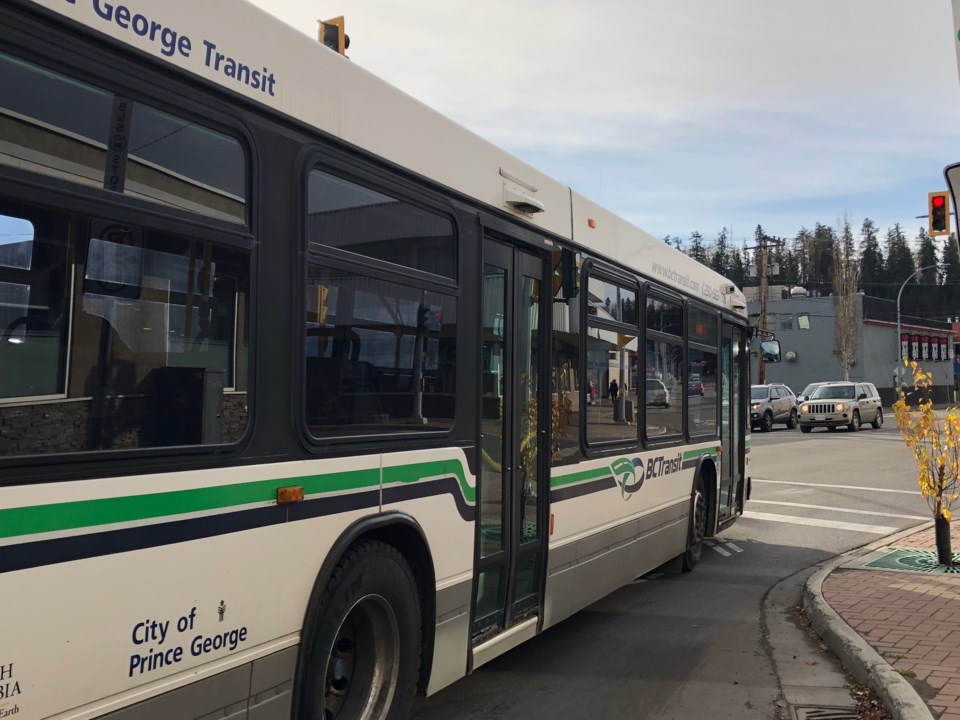Prince George’s transit system is still struggling to carry on during the ongoing COVID-19 pandemic.
In a report delivered to city council at last night’s meeting (Nov. 9), Dave Bradshaw, manager of transportation and technical services, revealed local buses are facing an expected revenue loss of $860,000.
“Since the last report to council, service level reductions were implemented and the system is currently remaining on a summer schedule with the reduced student numbers at the post-secondary institutions,’ said Bradshaw.
“Some of those resources have now been reinvested in flex hours, which allows for one or two buses to remain on standby during the times of the day when the system is on the highest ridership and can be deployed where necessary.”
The 15-UNBC/Downtown route operates at a reduced frequency than it usually would while the university is in full session, while the 17-UNBC and 18-Spruceland are not operating at all.
The system’s overall ridership remained stagnant through the summer at roughly half of what it was in 2019. At the beginning of September, the ridership did not see its’ normal increase from postsecondary students.
The Prince George transit system is operating at approximately 45 per cent of normal ridership, at roughly 3,100 passengers per week. This is on trend with the provincial average, which remains at 43 per cent of normal.
“The COVID-19 pandemic continues to impact our finances on the operations in Prince George as the low ridership continues to impact our revenue,” said Bradshaw.
As the number of confirmed COVID-19 cases continues to rise throughout the province, Prince George transit is continuining with limited capacities on all bus types are still in place and safety measures such as the cleaning of buses continues on a daily basis.
Masks became mandatory on board buses on Aug. 24.
In September, mask usage on Prince George transit was measured at approximately 62 per cent and It increased slightly to 64 per cent in October.
“That is a common theme we have heard from riders asking ,the question why is it not mandatory, so hopefully there will be more education coming up to encourage more people to wear them,” noted Brashaw, when asked why not all users were wearing masks.
Without the impact of the COVID-19 pandemic, the Prince George transit system would have actually seen an increase in service levels after council signed a Memorandum of Understanding (MOU) in June 2019 agreeing to an expansion, but it has since been put on hold.
“For service expansion in April 2020, BC Transit announced that all expansion hours would be deferred toa future date,” explains Bradshaw, noting that in order to officially authorize service expansion a revised MOU would now need to be approved by council.
“COVID is such a pain,” noted Coun. Cori Ramsay. “We have done so much work on our transit system over the years and to see this pandemic impact it and cripple it and those advances that we have been committed to is so disappointing.”
To assist with this loss in revenues, the city has elected to use reserve funding and this will be applied to the operating costs for the Annual Operating Agreement (AOA) for 2020 and 2021.
The final revised AOA is expected to be presented to council in December before year-end.
This version is expected to include the financial assistance received from the province, as well as the implementation of reserve funds.




